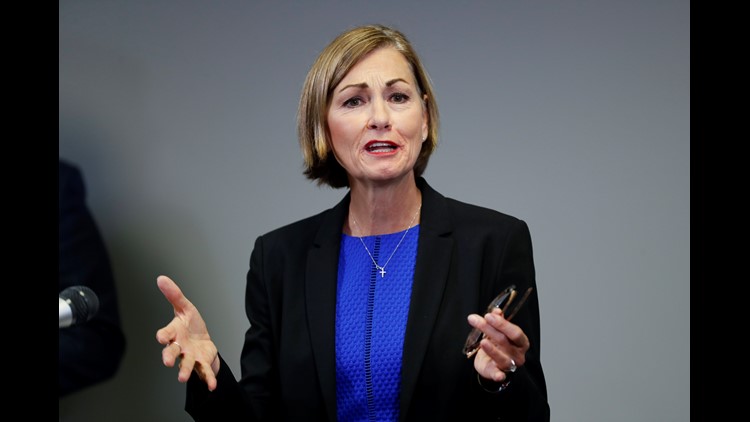DES MOINES COUNTY, Iowa — VAN METER, Iowa (AP) — Gov. Kim Reynolds announced Friday that she would override local school districts and require students to spend at least half of their schooling in classrooms despite the threat to teachers, students, and their families from the surge in coronavirus cases in the state.
Reynolds’ proclamation drew immediate criticism from the state teachers union, which called it short-sighted for unnecessarily exposing students and school employees to a health risk. A leading Democratic state senator accused Reynolds of ignoring science and common sense.
Her order did make an exception for parents who want their children to shift completely to remote learning. it also said accommodations must also be made for any student to learn remotely if they, a caregiver, or a person they live with has a health condition that would increase their risk of COVID-19.
Reynolds’ decision will invalidate plans implemented by some districts, including the state’s largest, Des Moines, which planned to limit in-person classes to one day a week for most students, with online learning on other days. The governor’s actions, which were outlined in a proclamation signed Friday, were in line with the views of President Donald Trump’s, who has said he thinks it’s essential that students return to classrooms despite surges in parts of the country, including many states that aggressively lifted restrictions despite warnings from health officials about doing so too soon.
”One of the most important milestones in our recovery effort is getting Iowa students back to school,“ Reynolds said at a news conference. “And while we all know this school year will be different than ever before, its critical that we prioritize bringing Iowa’s children back to the classroom safely and responsibly.”
Reynolds said districts could seek waivers to the 50% requirement from the state Education Department, which would consider making exceptions if there are local surges in virus cases. There will be no change in the Education Department’s recommendation that districts not require that students and teachers wear masks in school, she said.
The Republican governor issued her order a little more than a month before the start of the school year and amid rising numbers of coronavirus cases. Iowa, which was among the few states that resisted a stay-at-home order during the pandemic, posted its highest daily total of confirmed COVID-19 cases on Friday, continuing the recent surge that began in late June in the state. State health officials on Friday reported 879 new confirmed cases and five more deaths. Rates of hospitalizations and intensive care stays from the disease have been increasing since early this month.
Reynolds said additional guidance will come from state education officials and her office by Aug. 1, including how schools will deal with outbreaks and other issues that may arise.
Mike Beranek, the president of the Iowa State Education Association called Reynolds’ proclamation short-sighted.
“On the same day Iowa reports one of the highest one-day totals since the pandemic began, we are outraged that Governor Reynolds’ response to this spiraling community spread of COVID-19 is to make it harder for school districts to move quickly to protect the health and safety of students, school employees and communities at large,” Beranek said.
Democratic state Sen. Herman Quirmbach, the ranking member of the Senate Education Committee, said schools are being forced into difficult choices between in-person learning and the health and safety of students and staff.
“The governor is continuing to ignore science, common sense, and the health and safety of Iowans,” he said.
The proclamation, which takes effect July 25, also removes limitations on how often and how long substitute teachers can be in the classroom and expands who can serve as a substitute.
It allows a parent to voluntarily choose to keep a child at home for remote learning and said accommodations must also be made for any student to learn remotely if they, a caregiver, or a person they live with has a health condition that would increase their risk of COVID-19.



